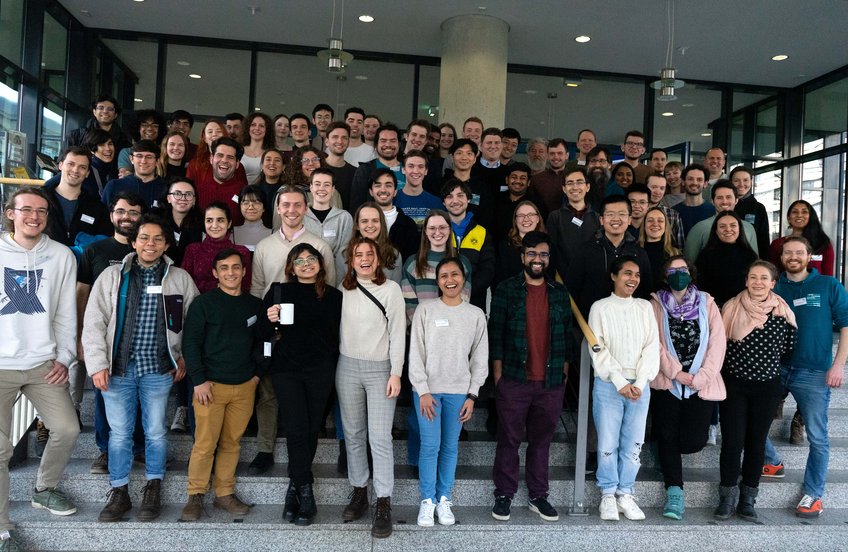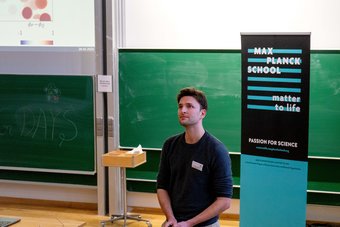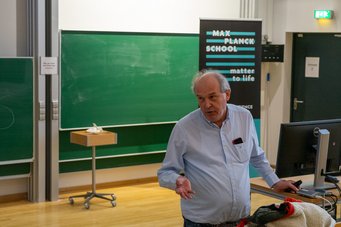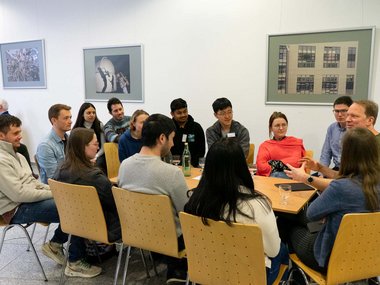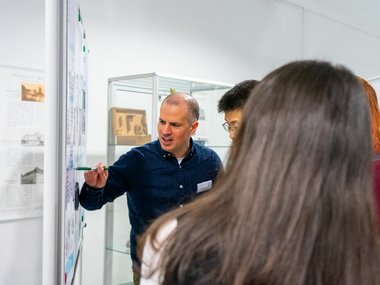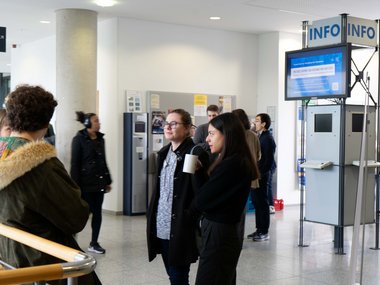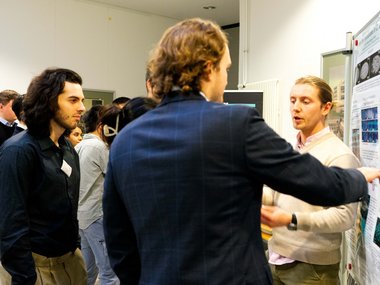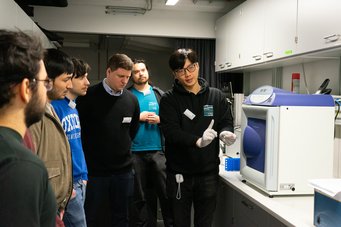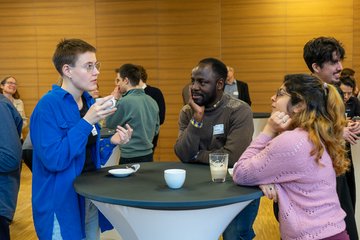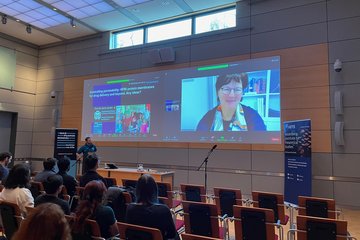MtL Spring Days 2024
Spring may evoke many things; blossoming flowers, chirping birds, return of the lush green, bountiful gush of water, or to the more physics inclined, a rigid elastic coil that can return to original form after compression. For us at the Max Planck School Matter to Life, spring is that time of the year when all of us dispersed and immersed in our studies across Germany come together to revel in our shared passion for science.
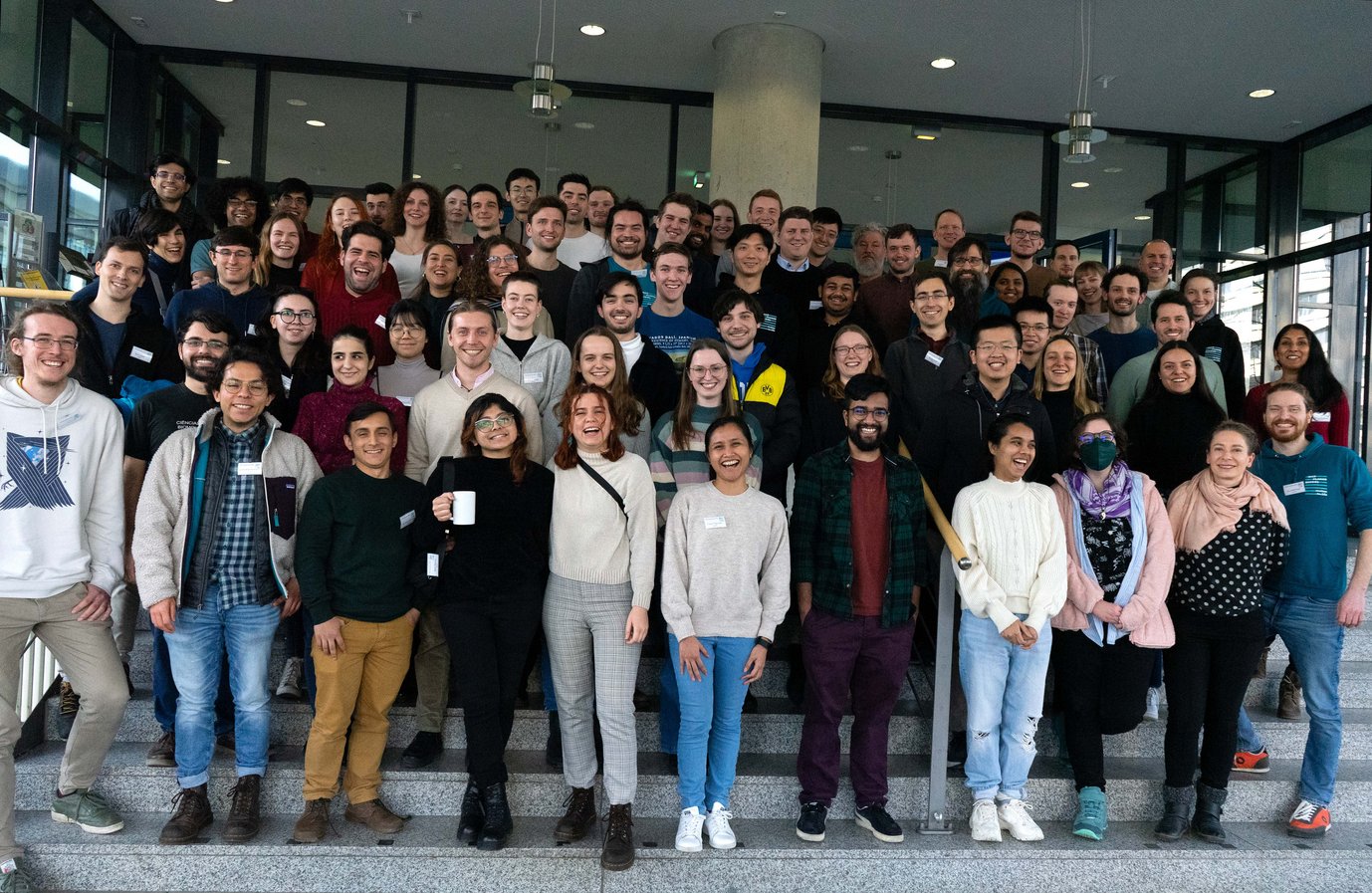
This year we met at one our study sites, the historical city of Göttingen, on 26th and 27th of February in the hallowed walls of Physics Faculty, graced by the many luminaries in this field. After a warm and witty welcome by our host, Stefan Klumpp, who walked the audience through the history and factoids about our host city, the first session began, and science took center stage. Spread over two days and four sessions, the gamut of research topics covered by both faculty and PhD candidates was impressive.
Science from the talks
Judging a cell by its cover
The plasma membrane that encapsulates the cells was the primary focus in the works presented by Claudia Steinem & PhD student Lena Strieker. Claudia’s research on the generation of optimal artificial membrane found that a pore-spanning model was the best to study the mechanism of Shiga toxin. The latter explained the importance of sphingolipids for wound closure and repair. Jan Geisler presented his PhD work on the dynamics of an important component of C.elegans egg shell, chitin and its synthesis.
How do cells stick and why is it important?
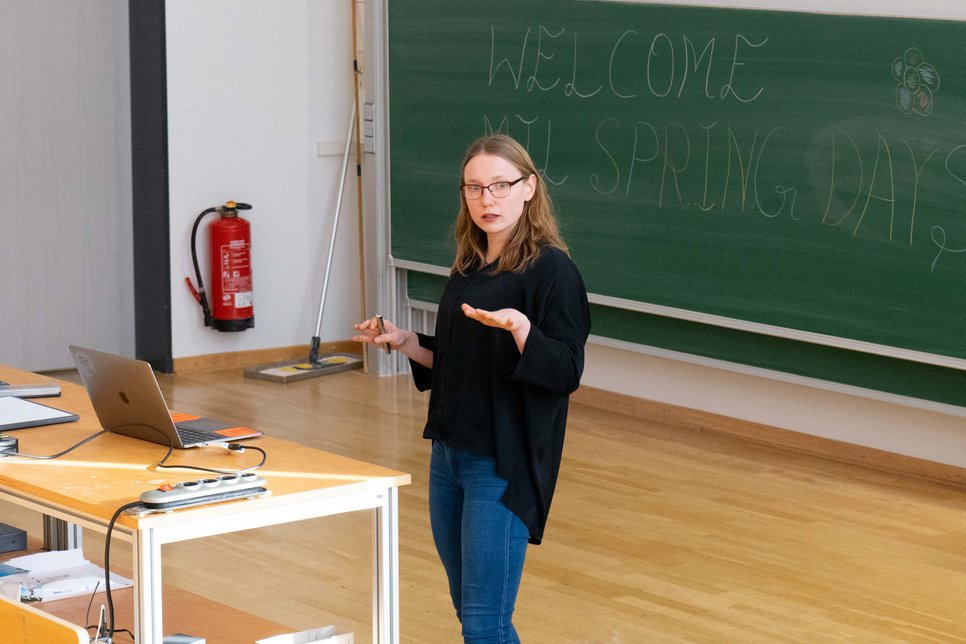
This question was addressed by our PhD candidate Michelle Kemper and Karim Ajmail. While Michelle shared her research on the role of cell junction proteins of epithelial cells in dome formation, Karim, who just began his PhD, demonstrated the use of microfluidics to model adhesion dynamics of natural killer cells mediated killing of cancer cells. Understanding these properties can shed better light on dysregulation, such as in cancer.
Intra and extracellular scaffold
Sarah Köster’s study of cytoskeleton, its components and their properties demonstrated how discoveries in basic science can have translational applications. Their characterization of vimentin, a cellular shock absorber, has led to the development of analogous double network hydrogels. The poor characterization of collagen fibrils despite its abundance and pivotal role in molecular architecture is being rectified by the PhD research of Aysecan Ünal through single particle analysis.
Why should biologists befriend theoretical physicists?
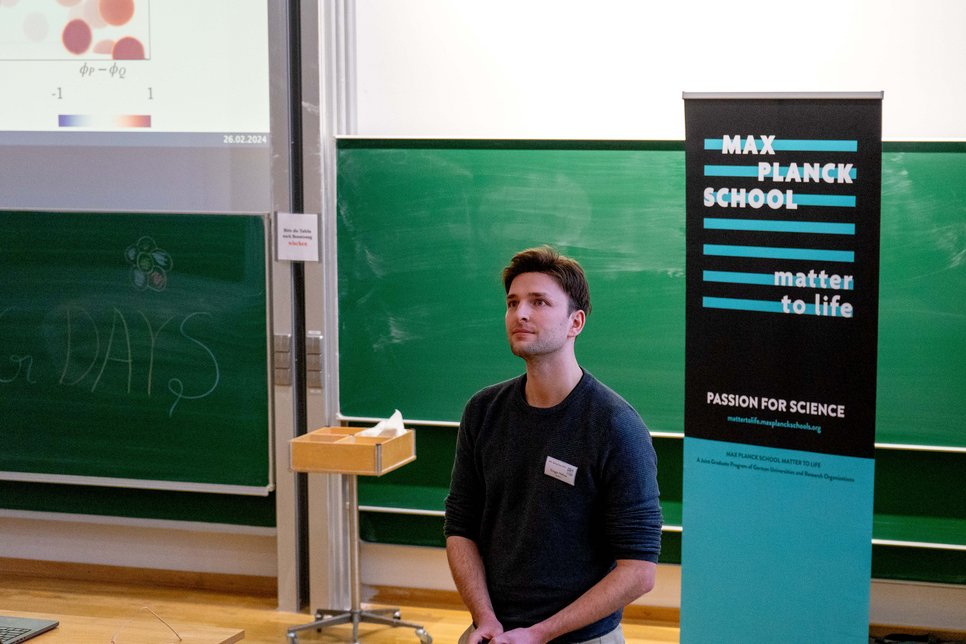
The intriguing topic of self-organization as explained by Ramin Golestanian underscored the importance of how and why we need to first learn the rules of the game of molecular assembly. Timo Betz’s captivating talk reiterated the need for quantifying mechanical properties of the cell and correlate it to biological functions. Gregor Häfner, one of our first PhD candidates, showcased his newly theorized model of diffusophoresis for the transport of membraneless organelles. These works demonstrate that if we want to make living matter from scratch, we need to understand the physical principles governing it.
Exploiting the DNA
The physical properties of the DNA double helix, beyond its central role of encoding genes, can be leveraged for synthetic biology to make DNA origami membranes, as was successfully engendered in the PhD work of Christoph Karfusehr. Alternatively, Johannes Hahmann’s PhD thesis study illustrated that mechanophore free precise scission of DNA backbone with near-nucleotide accuracy can have far reaching applications in material science.

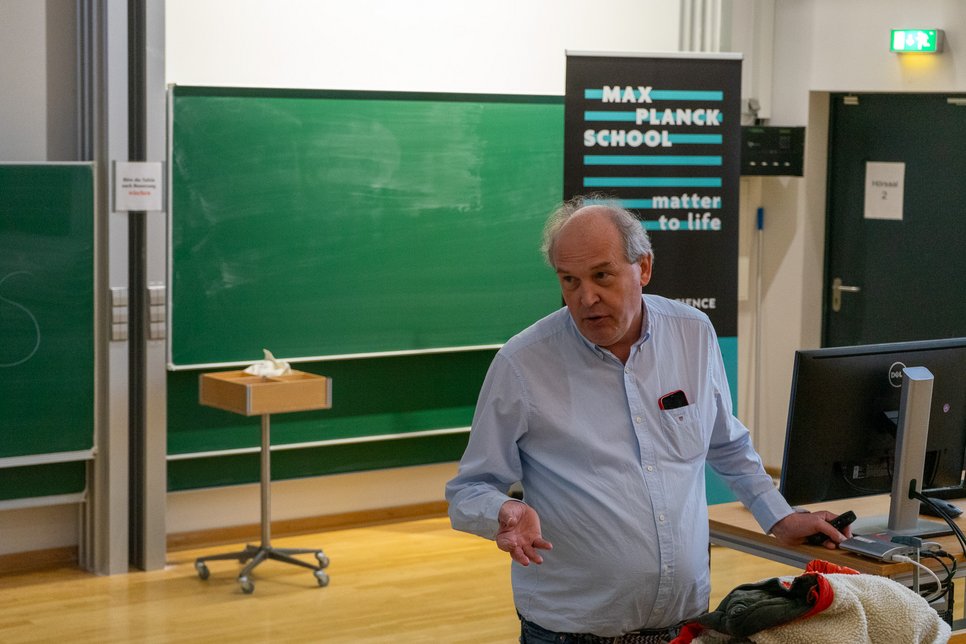
Minimalism in genes and cells
“Life can only be understood backwards, but it is lived forwards.” Petra Schwille and Jörg Stülke presented their research methodology to live life backwards, or at least create it! Petra’s fascinating approach to division of synthetic minimal cells using the bacterial system FtsZ, could clear one of the bottle necks of synthetic biology. As opposed to this bottom-up approach, Jörg adopted a top-down method for his mini Bacillus project. By removing non-essential genes, this is the most advanced genome reduction achieving 42.3 % decrement. These contradictory yet complementary perspectives indicate building life means understanding.
Science beyond talks
The posters presented by our Master and PhD students proved that a talk is not the only effective format to convey one’s research to a larger audience. After a 90 seconds pitch by each presenter, all participants moved to the foyer which then came alive with discussions, debates and ideas.
The lab visits, which are now a mainstay of the MtL days, were a chance for students to get a first-hand glimpse into the research conducted by the groups of the MtL Fellows situated at Göttingen. These excursions serve as a primer for students to learn about the practical aspects of research or a reconnaissance mission to their potential future place of work, and overall, a great networking tool. We thank all the labs and the team members who took the time to show the students around.
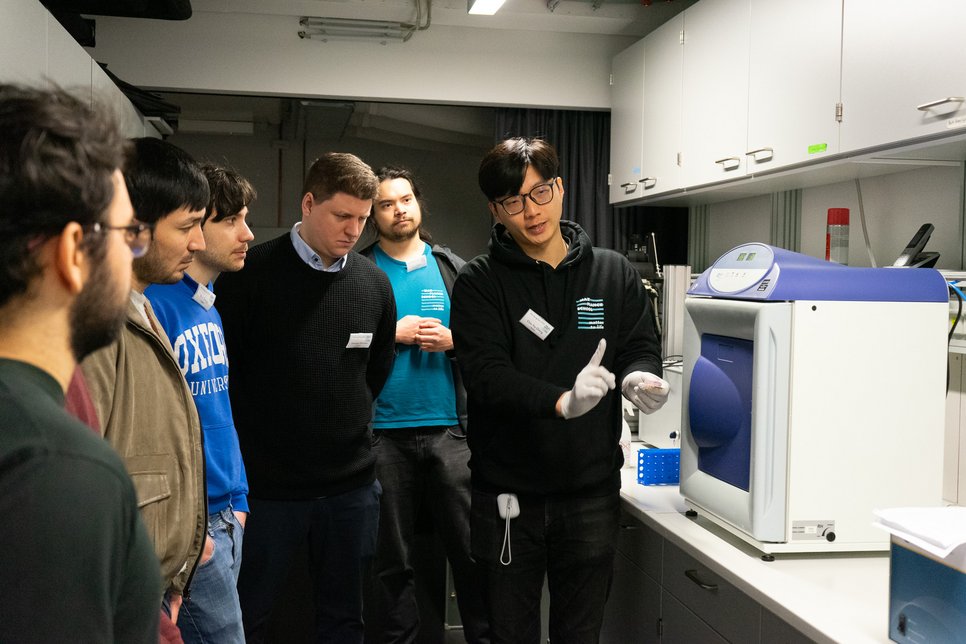
Students also had the opportunity to pick the brains of our experienced faculty regarding career paths and trajectories within academia in our round table career session as part of the first day evening session. The frank & honest advice imparted by our Fellows is sure to have influenced our novice researchers. In the immortal words of Yoda “always pass on what you have learned”, and this is indeed what happened!
The symposium ended with the closing remarks of Stefan, who rightfully pointed out the pleasure the Fellows have in seeing the scientific growth of our students over the years through the interactions at these MtL days. We thank the students and faculty for their enthusiastic engagement and for making the event a success. With several lessons learned and their knowledge whetted, students left the event truly inspired.
We are already looking forward to our Matter to Life Fall Days 2024 in Dresden!
